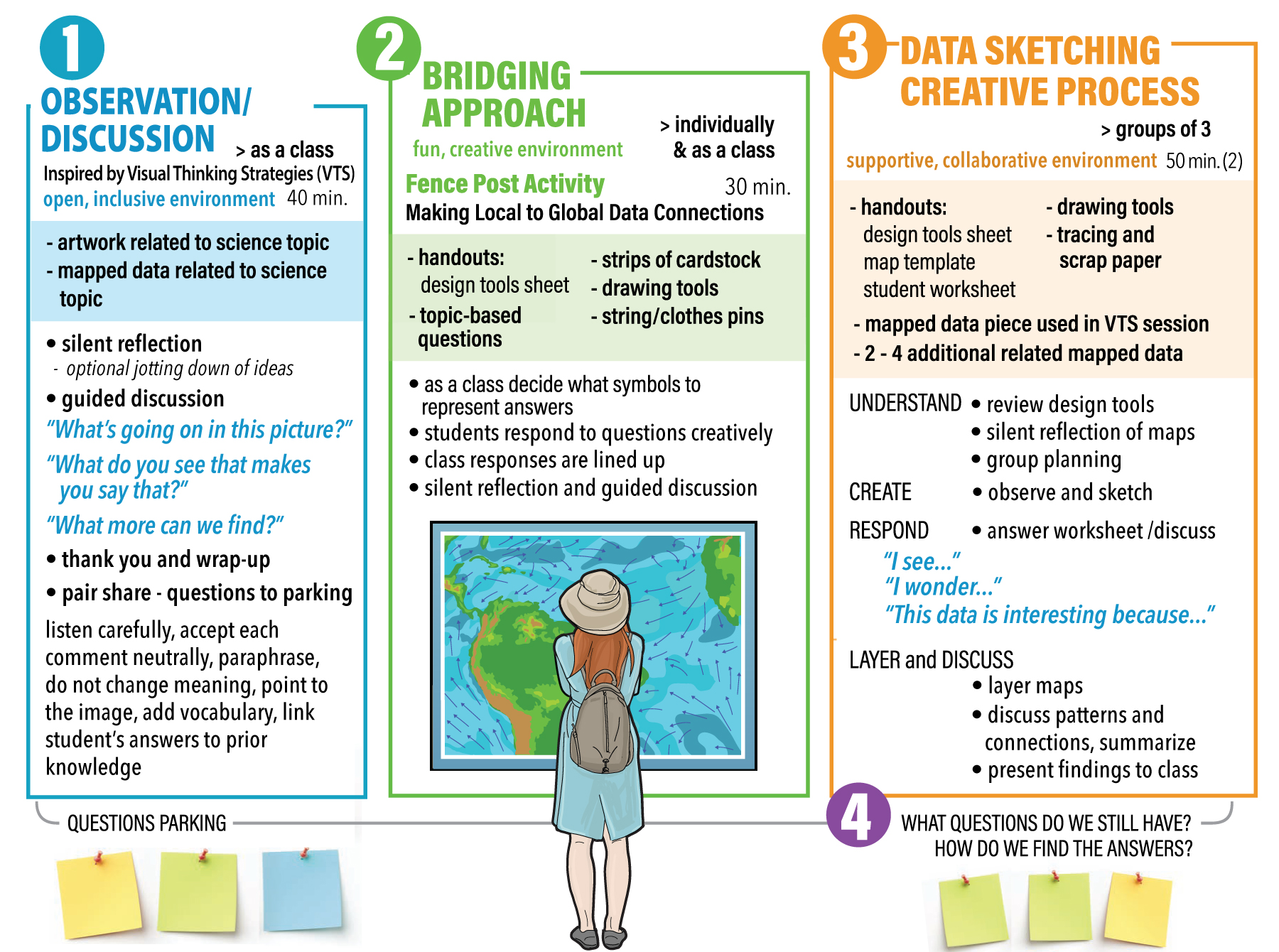CURRICULUM
The Building Insights through Observation (BIO) model consists of four parts. Please read through each step below to learn more about this process. A printable, full lesson template can be found here. The template can be used to help you build your own curriculum. The approach can be adapted to a range of content areas. The teacher selects a single topic area (e.g., plate tectonics) and then finds related art work and global mapped data. Sample full unit lesson plans can be found at the link below.
Note: Although the time required varied among the teachers who developed and implemented their units for the project, the full unit typically required at least 3-4 class periods of at least 45 minutes each.
Step by Step
![]() Observation and Discussion:
Observation and Discussion:
Art/Data
“VTS-inspired” observation sessions of at least two images – an art piece relating to the topic of the unit, and a related geospatial data visualization. Start with Step 1.
![]() Bridging Approach:
Bridging Approach:
Fence Post Activity
Students represent personal data, thoughts, and opinions in a graphic form and observe and discuss gathered responses.
Go to Step 2.
![]() Data Sketches
Data Sketches
Using a creative thinking process, students create their own representations of geospatial datasets on tracing paper, then overlay those different “data layers” to discuss patterns and correlations.Go to Step 3.
![]() Guided Discussion (Making Connections)
Guided Discussion (Making Connections)
Students review questions that arose during the first three steps and discuss where they might find the answers to those questions.
Finish with Step 4.






